 |
Garden News |
 |
 |
Garden News |
 |
|
Irish Historic Apple Collection |
Fruits of Success |
poisonous plants click here |
Easy flower bed for spring |
|
Photo Album click here |
The Mediaeval Garden |
|
new encyclopedia of Irish-raised plants |
Australian Garden & Wildflower Tours |
| Lamb Clark Historic Irish Apple Collection
Dr. Keith Lamb is now an elderly gentleman; a retired agricultural scientist, he lives in Co. Offaly where he spends his days tending his extensive gardens, two of which are extensive gardens, two of which are distinctive and special. He has been collecting wildflowers from all parts of the world. although he's an authority on old Irish varieties of apple, his work is rarely acknowledged. In the 1940, Dr Lamb recognised a pattern of destruction in both commercial orchards and private orchards. Modern marketing demanded mass production of fewer varieties, of uniform shape and well known characteristics. Even in private gardens, variety was also on the decline. His
study was therefore prompted by these developments and he set out to identify,
collect, cultivate and save numerous varieties of old Irish apples that
were still in private and commercial cultivation in the 1940s. Some
of the apples he encountered and saved have wonderful, suggestive names
like Honey Ball, Greasy Pippin, Lady's Finger, Maiden's Blush, Widow's
Friend and Sweet William, of the last variety Dr Lamb notes that is was
considered "almost to sweet to eat". Irish varieties of
apple were noted for their resistance to disease, especially canker and
scab. Today his work continues in two orchards where experts have managed to retrieve and cultivate some of the old varieties identified by Dr. Lamb: UCD, Lamb Clark Historic Apple Collection. The other is work of Anita Hayes of the Irish Seed Savers in Scariff, County Clare. Here, old Irish varieties of apple are not only saved and cultivated, but young stocks are also available for sale. |
| Wood for everything
Having a surplus of trees, or like young trees do everywhere, sprouting were there are already enough trees planted. There is the option of planting all these leftovers close together. Having a block of young trees growing up like this, they will all end up growing straight up to the light. This provides us with a nice mix of sticks and fire wood for the winter. |
The sticks can be cut or pollarded every
two or three years, to be used as Fire wood, like ash or willow, Walking
sticks (blackthorn) Plant support for the garden or even fens posts.
It is also a little nature place, were lots of little births can nest safely.
|
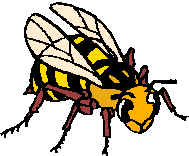 Bee's
Bee's
A swarm in May is worth a load of hay A swarm in June is worth a silver spoon A swarm in July, is not worth a butterfly
If the new swarm is early enough in the year they will give you the best honey the same year. Getting very busy before they are ready to swarm, (this will always happen early in the afternoon). They swarm up in a cloud above the hive. The bee's will settle down in a big clomp around the queen and you can shake them into a box in the evening and dip them in the new hive. Another way is to have a wide plank sloping up to the entry of the hive, tip the bee's onto the plank in the late evening and they will all crawl up the slope into the hive. It is an amazing site, they do not sting when they are swarming, there belly's are full of honey and they won't go far to start a new hive. |
|
Fruits of
Success Growing fruit the organic way may fatten up your wallet Organic fruit isn't just tastier and better for the environment, it also makes better business sense Soil scientist John Reganold ran a detailed comparison of factors such as soil quality, apple yield and environmental impact. The organic orchard relied on manure as fertiliser and used natural methods to deal with parasites. The team found the soil fared best in the organic plot, it held water better, and resisted degradation at the surface. Previous studies have shown that the build-up of sulfhur, commonly used as a natural fungicide, could be a long-term problem, but the team found no evidence of this. " the incidence of pest was very low. The researchers also found the organic orchard was more energy efficient than the conventual's and intergraded systems, required less labour and less water per apple produced. It even made more money, mainly because organic apples command higher prices. Reganold counters that consumers are getting more for their money, " the organic apples were firmer and taste sweeter and better. |
|
The Mediaeval Garden |
|
| The
opening of the Medieval Garden to the public this coming June will prompt
the development of Castleisland as a major tourist attraction.
Planning permission has been received from Kerry County Council to develop the site which will cater for an estimated 100.000 visitors annually. The
Medieval Garden will provide a link between Castleisland of the twenty
first century and the town as it was in the fourteenth century, when the
town was at the height of itís glory, as the administrative Capital of
the vast tract of land governed by the Earls of Desmond. |
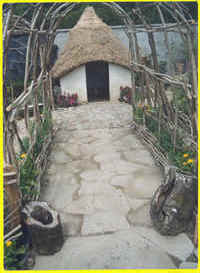 |
| The team involved in the development
of the Garden, were responsible for installing the Medieval Garden which
won lavish praise at the International Garden Festival in Mellow Race
Course in 1999 and 2000. The Mellow Garden is undergoing extensive
refurbishment in anticipation of the International Mellow Festival 2001. Negotiations are opening with a view to identifying a suitable sponsor, ideally a Kerry based company, who would recognise in the Castleisland Medieval Garden an identity, which would suit their corporate image. Redmond Roche |
|
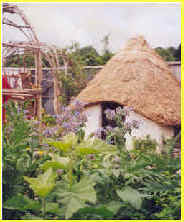 |
The
Mellow Garden shows is in miniature what is proposed for Castleisland. |
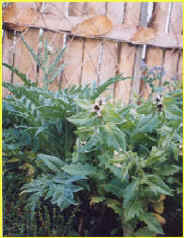 |
The
Garden will also provide an interface with the Irish Language; the Irish
names being presented in authentic Medieval Irish script. The names
themselves are bearing testimony to the philosophy of Medieval
Castleisland
Designed by Cork born designer Valerie Golden the plan incorporates many aspects of Medieval gardening from Culinary to Medical herbs, fish ponds, Beehives, Orchard and pleasure garden, which will appeal to every one from old to the very young. |
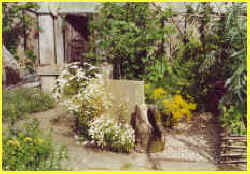 |
|
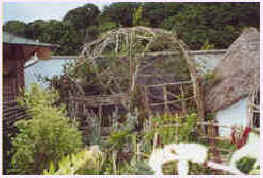 |
|
|
|
Australian Garden & Wildflower Tours |
|
Easy way to make a flower bed for springFind
a place for your new flowerbed and measure a peace of black plastic, If
we take it off in spring when the days are a bit warmer the soil will be
totally clean and dry, we can carefully give it a shallow dig. One
or two weeks later we can hoe the young weed and plant our young
flowers, shrubs or seeds. Planting
perennial cottage flowers mix with one or two shrubs will give you
little work for many years.
|
|
In a sumptuous new encyclopedia of Irish-raised plants, just published by the Irish Garden Plant Society, Charles Nelson list 136 Irish auriculas grown in the Earl of Meat's garden at Kilruddery, Co Wicklow, beginning as early as 1736. But among the 5,300 plants he includes in A Heritage of Beauty it is the cultivars of native Irish species that catch the ecologist's eye. Plants found in the wild are still being introduced, quite unchanged, into the garden nursery trade. Most famous of all was the upright (fastigate) Irish yew discovered on the limestone slopes of Cuicagh Mountain, not far from Florencecourt, Co Fermanagh, in about 1740 and now cloned across the world ( the mother tree can still be seen in the grounds of Florencecourt house). Mizen Head, Co Cork, for example, is one of the windiest places in Ireland, forcing vegetation into a dwarfed and creeping growth, here grows the Ulex gallii, hugging the ground as a mat-forming shrub. The common heather, Calluna vulgaris, also became a creeping plant, no higher than 5 cm.cloned into new plants for rockeries or ground-cover. A common juniper found by holiday-makers near the sea at Derrynane, Co. Kerry was given a prize by the Royal Horticultural Society. The latest addition to the Irish ivies, the purple stemmed Helix hibernica "Dungloe Gap" found on the Kerry mountain side in 1986. Some wild discoveries are, like the Irish yew, unmistakable sports, or spontaneous mutations. A white fruited blackberry was found near Bray Head, Co. Wicklow, a daisy with gold-edged leaves appeared in Cabinteely, Co. Dublin. A real prize could be the red-flowered water-lily, reported 50 years ago growing in a peaty lakelet of Slieve Snacht in Inishowen, Co Donegal. In parts of Kerry there's a species of hawkweed, the lovely. slender-stemmed "dandelion" of the drier countryside, that raises its flowers more than half a metre high: it's now a stately golden cluster for the garden. Wildflowers that grow in colonies. often on ancient sites, can take on colour variations that seem more beautiful than the norm. A word on finding something "different". Don't dig it up, whatever the temptation: times have changed since the old gardening plunder was acceptable. If it's an interesting form of a familiar plant, try rooting a slip. If it's really, really special and strange, send a photograph to Dr. Tom Curtis at Duchas.
|

A Heritage of Beauty (40 pounds plus 6 for post and packing) is available from the Irish Garden Plant Society, National Botanic Gardens, Glasnevin, Dublin 9 |
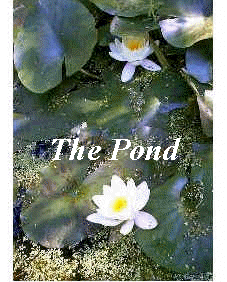 |
Ponds can be constructed using flexible liners laid on anything from clay, sand to old nylon carpet. One enemy of pond liners is the sun, causing any liner exposed to it to go brittle and split after a few years, use big flat stones around the edge of the pond, well cemented in and slightly emerging over the edge of the water, to cover the lining.The large pond of about 4 metres by 3 metres wide and about 1 metres deep in the lowest section is the perfect environment for goldfish and koi carp. A pond of this size does not need an oxygen pump: all it needs is a natural environment of plants in and around the pond to provide enough oxygen.The Pond attracts Dragonflies, Newts, Water Beetles. The frogs come in late winter/early spring, and later on is always a home to tadpoles. The fish will eat most of the tadpoles but some will be able to hide in the pond and will make it to small frogs.
|
|
|
The pondweed, (Elodea Canadensis) provides hiding, The Heron will come around this time, and he would like to eat the goldfish. The Orontium Aquaticum is now showing it's leaves looking silvery still under water and blue/green in color when they emerge above the water, and will flower from spring. They only need about 50 cm deep water. Water lilies will grow in the deepest part of the pond I cannot now imagine my garden without a
pond, it involves a lot of digging but when they are clear and full of
life it makes it all worthwhile. Waiting and watching, to see what
creatures turn up to inhabit this new little world
|
| Milk's fungicidal
powers were discovered in the Brazilian Agricultural Research
Corporation, looking for cheap ways to control plant pests. It attacks a
mould known as powdery mildew, which is a major problem for organic
farmers scrambling to meet the growing demand for chemical-free
vegetables.
Milk is known to kill some microorganisms. It also contains potassium phosphate, which boosts the plant's immune system, spraying heavily infected plants twice a week with a mixture of one part cow's milk to nine parts water was at least as good at stopping mildew as the chemical fungicides.
|
|
|
Feeding
plants and vermiculture, when all our plants that are in pots
start growing there roots again to collect strength for their new
sprouts. The
plants potted last year will be cleaned off their top layer of earth
(without harming the roots), then I will top up with
well-rotted compost or the vermiculture the worms make over winter in
their bins in the cold frame. See Worm Farm. Many plants hardly ever have to be changed out of their pot, when the pot is big enough and toped up with the vermiculture every year. The bulbs are very happy in their pots, in this wet climate they appreciate the draining of a good pot environment. Most plants thrive better without their roots in the water especially when it is cold and bulbs will rot. Mixing
bulbs with perennials or annuals will give flowers and green all year
around All
plants start of with this feeding, to make more roots and growth in
general. The
next summer feeding is mostly potash as a flowering feed.
|
|